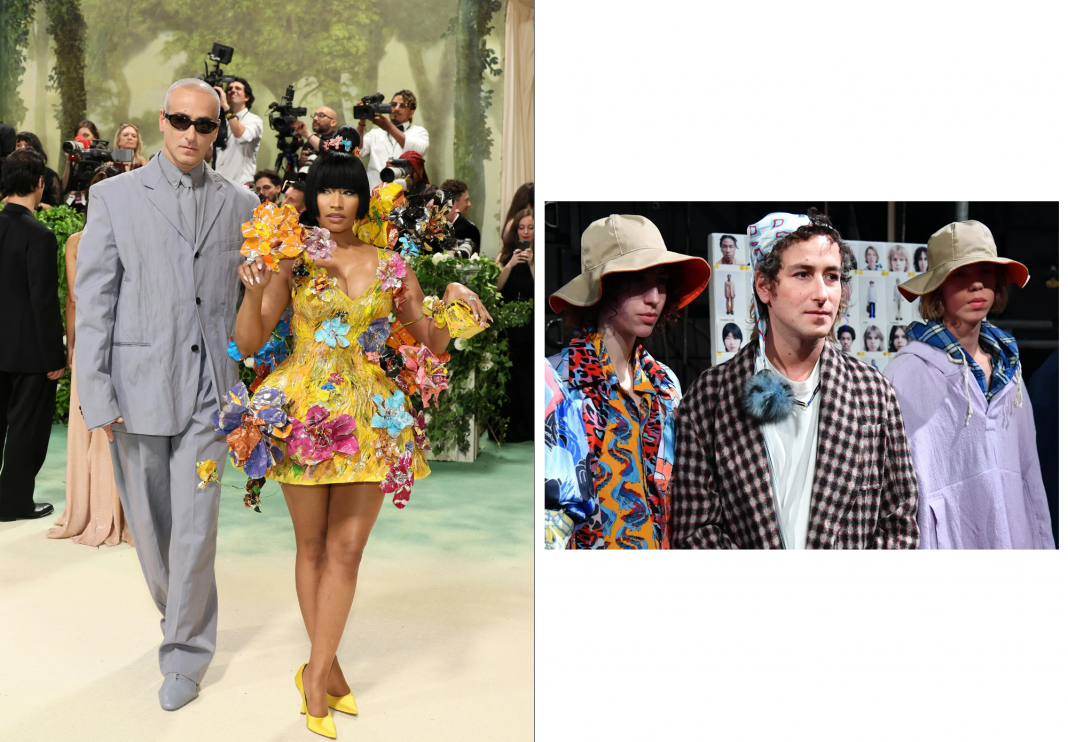In the ever-rotating world of fashion’s top creative roles, few departures feel quite as personal—or as poignant—as Francesco Risso’s exit from Marni. After nearly ten years at the helm of the Italian house, the designer has announced his departure, marking the end of an era defined by experimental elegance, tactile storytelling, and a fiercely independent aesthetic. When Risso took over from founder Consuelo Castiglioni in 2016, many questioned whether the cerebral spirit of Marni could survive under new leadership. Nearly a decade later, it’s clear he didn’t just keep the brand alive—he transformed it into something freer, more unpredictable, and arguably more expressive than ever before.
From outsider to alchemist
Francesco Risso arrived at Marni with an eclectic résumé and the heart of a poetic rebel. Born in Genoa and educated at Polimoda, FIT in New York, and Central Saint Martins in London, his creative instincts were shaped as much by punk as by couture. By the time he was tapped to succeed Castiglioni, Marni was at a crossroads: still beloved by insiders for its intellectual quirk, but slipping into irrelevance amid the shifting tides of global fashion.
The early years of Risso’s tenure were marked by friction. His first collections were met with skepticism, with critics quick to mourn the Castiglioni era and slow to embrace his vision. But instead of retreating, Risso leaned in. He doubled down on color, shape, and subversion—unafraid to explore asymmetry, patchwork, or surreal silhouettes. Where Castiglioni had brought a kind of meditative polish, Risso introduced joyful chaos.
His Marni was a laboratory for feelings. Fabric became emotion; clothing, a kind of performance. Over time, the industry began to take notice. Shows grew more ambitious—held in forests, industrial spaces, or with dancers instead of models—and his take on fashion began to feel less like trend-chasing and more like world-building.
A legacy of irreverence and heart

What set Risso apart wasn’t just his commitment to pushing boundaries, but his ability to infuse collections with sincerity. In an age where fashion often feels hyper-curated or algorithmically driven, his Marni was unmistakably human. Pieces bore the fingerprints of their making—hand-painted, stitched, and remade from recycled materials, echoing themes of sustainability before it became a marketing buzzword.
“Marni was a studio, a stage, a dream,” Risso wrote in his farewell statement. “It brought color, instinct, care and created a space where people could feel like themselves.” That sense of creative intimacy extended to his casting choices and collaborations. Risso often featured friends, artists, and non-models in his shows, challenging traditional ideas of beauty and inviting viewers into a more inclusive vision of style. His tenure also saw Marni embrace immersive experiences and multimedia storytelling, including performances that blurred the line between runway and ritual.
Renzo Rosso, founder of OTB Group (which owns Marni alongside Diesel, Jil Sander, and Maison Margiela), called Risso “an authentic artist” in his parting tribute. And indeed, Risso’s time at Marni has felt more like an art project than a corporate reinvention.
What happens next—for Risso and for Marni
Risso’s successor has yet to be named, but the vacancy at Marni becomes one of the most interesting in today’s game of creative director musical chairs. Whoever takes over will inherit a brand that is artistically unbound, but commercially challenging—still niche in appeal and yet globally recognized.
The departure also sparks curiosity about Risso’s next move. Will he continue designing under his own name? Return to the world of costume, theater, or art installations? With his vision and multidisciplinary background, almost any path seems possible. What’s certain is that fashion has not seen the last of his playful, philosophical fingerprints.
His exit also reinforces a larger pattern in the industry: one where risk-taking is often rewarded with cultural relevance but not always with longevity. As houses chase quarterly targets and social media clout, many creatives are finding the runway a difficult place to maintain both vision and stability.
But if Risso’s Marni taught us anything, it’s that fashion can still be about feeling—raw, sincere, and strange. He was a Marni of contradictions: joyful and melancholic, chaotic and composed, radically ugly and beautifully free.
The soul of a house, reimagined
In many ways, Risso’s work brought Marni full circle. While Castiglioni founded the brand as a space for quiet eccentricity, Risso expanded that eccentricity into something more chaotic and emotionally charged. Both visions, while different in execution, shared a resistance to uniformity—a belief that fashion could serve as a mirror to individuality, not just aspiration.
As the fashion world speculates on Marni’s future, it’s worth reflecting on what Risso achieved: not just survival in a notoriously unforgiving industry, but reinvention with soul. He didn’t just fill big shoes—he made his own strange, beautiful, paint-splattered ones and dared the world to try them on.
Whoever comes next will inherit not only a house with legacy, but one filled with color, contradiction, and courage. Thanks to Francesco Risso, Marni remains one of the most creatively fearless names in fashion—and perhaps now, more than ever, that matters.



